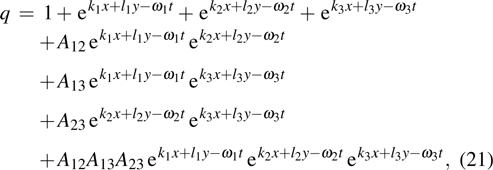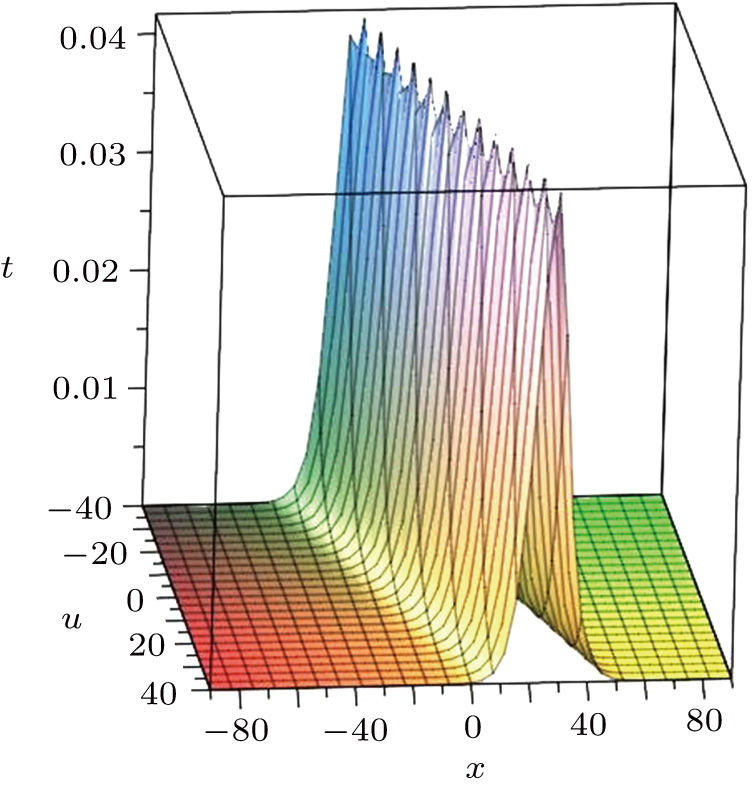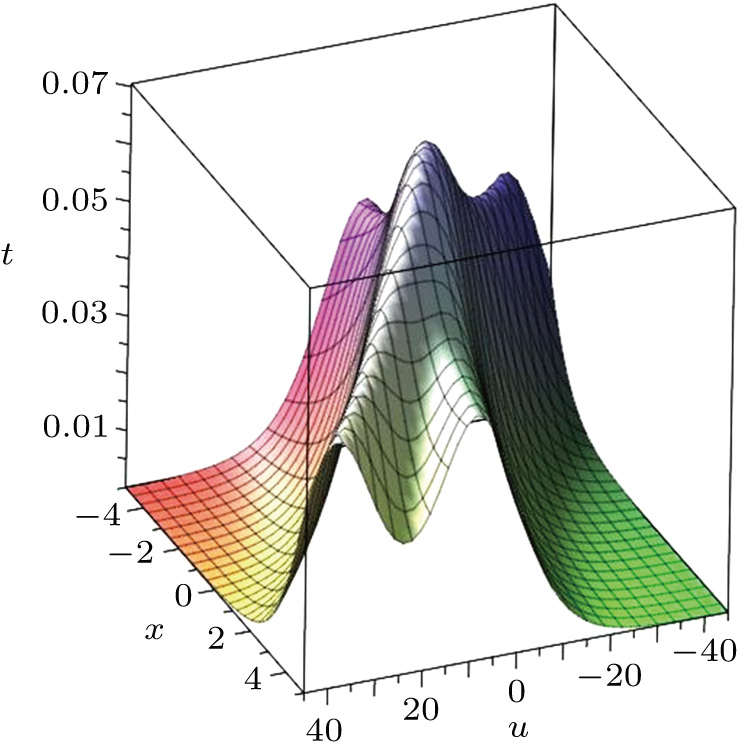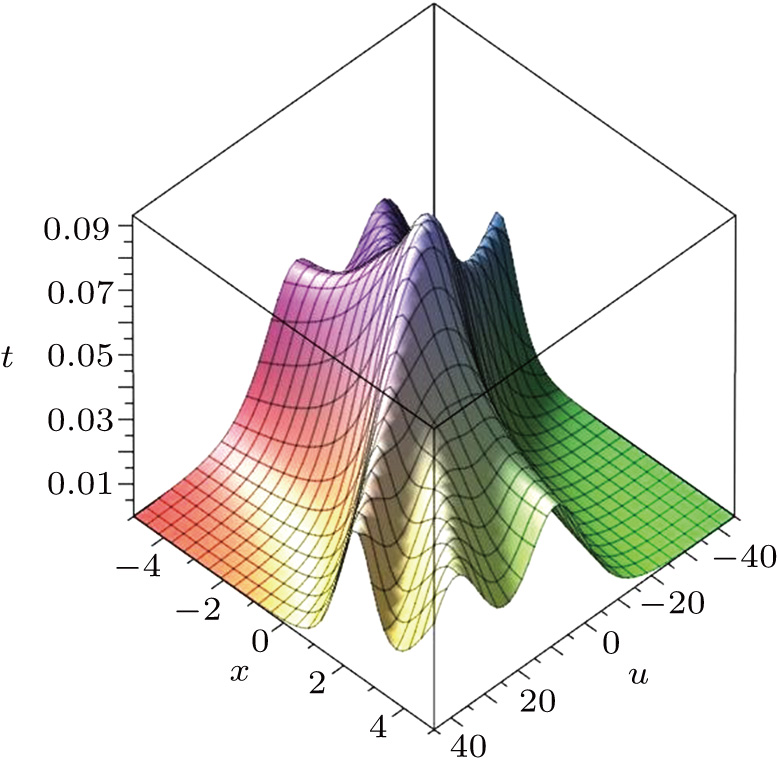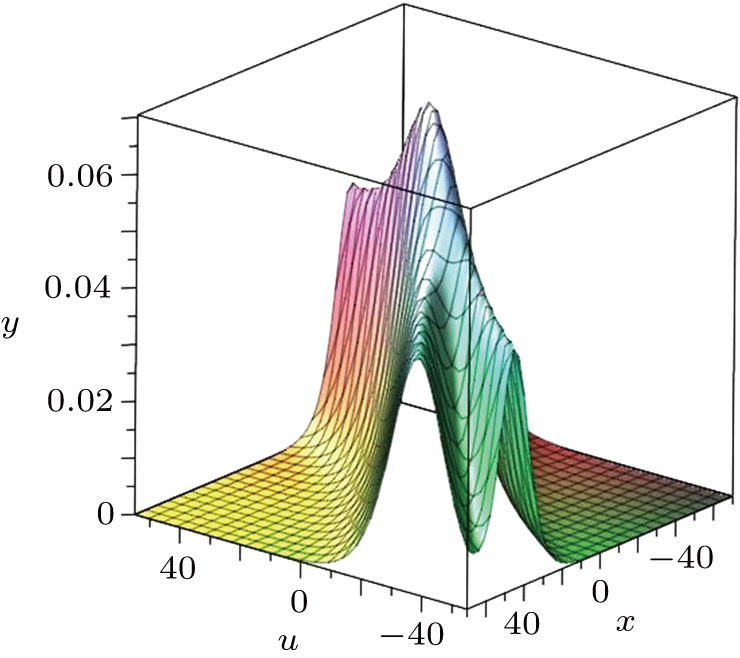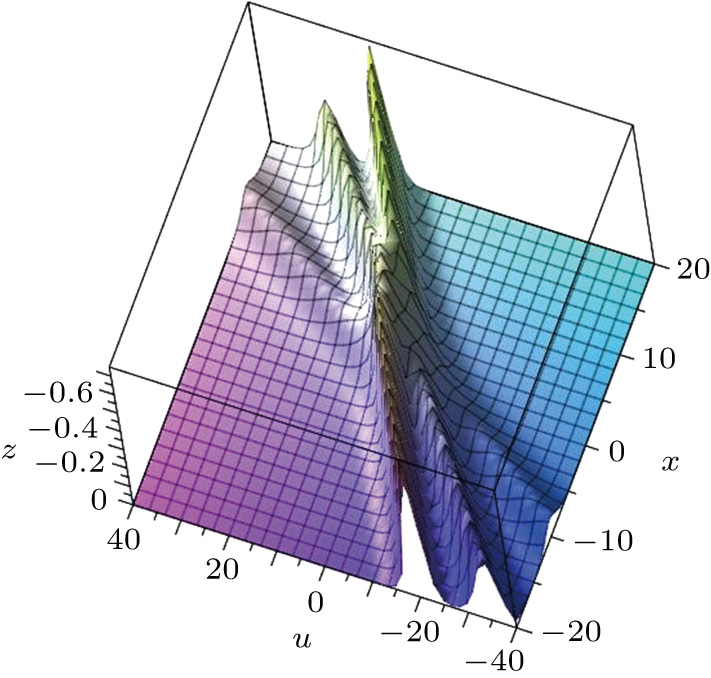Multiple exp-function method for soliton solutions of nonlinear evolution equations
Department of Mathematics, Faculty of Arts and Sciences, Uludag University, 16059, Bursa, Turkey
† Corresponding author. E-mail:
eyasar@uludag.edu.tr
1. IntroductionAs is well known, nonlinear evolution equations (NLEEs) are encountered in many physical problems as a result of modelling related with the phenomena which occur in nature. For example, the Korteweg–de Vries (KdV) equation arises in modelling shallow water waves, and the Burgers equation appears in nonlinear acoustic waves. NLEEs emerge in a variety of contexts such as, physics, fluid mechanics, material science, optical fibers, solid state physics, chemical kinematics, and finance. Solitons which are self-reinforcing solitary wave packets are one of the most important areas of research in the field of nonlinear optics.[1] Therefore, an important problem is obtaining solutions of these equations. In the last three decades, many methods were developed for constructing the analytical solutions of NLEEs. Some of them are listed in Refs. [2]–[8].
In 2010, Ma et al.[9] suggested the multiple exp-function method as a new constructive way for obtaining the multi-soliton solutions of NLEEs. The useful multiple exp-function method is widely used by many such as in Refs. [10] and [11] and by the reference therein.
The main objective of this study is to build multi-soliton solutions of some multi-dimensional NLEEs by applying the multiple exp-function method. For this goal we will consider (2+1)-dimensional Sawada–Kotera (SK) equation[12]
and (3+1)-dimensional nonlinear evolution equation (NLEE)
[14]
As can be seen, the above equations comprise the integral terms; therefore, we convert Eqs. (1) and (2) to partial differential equations (PDEs) by the help of
Then, equations (1) and (2) can be read in the following new form, respectively:
Up to date, the (2+1) dimensional Sawada–Kotera and (3+1)-dimensional nonlinear evolution equations have been studied by many researchers from different aspects (see, Refs. [12], [13], and [14]–[16]).
The paper is structured as follows. In Section 2, the method is oulined. In Section 3, we apply the method to the (2+1)-dimensional Sawada–Kotera equation and (3+1)-dimensional nonlinear evolution equation respectively. In the meanwhile, we plot graphics of some solutions. In the final section, concluding remarks are given.
2. Multiple exp-function methodNow, we shortly present the method step by step. The method will be given for the (1+1) dimensional NLEEs but surely it can be extended to the multi-dimensional case too. The basic steps of the multiple exp-function method are prescribed as follows.[17–19]
3. Application of the multiple exp-function method3.1. Application to the (2+1)-dimensional SK equationIn this subsection, our goal is to apply the extended multiple exp-function to Eq. (4).
3.1.1. One-wave solutionWe consider the following form as one wave solution:
where
A0,
A1,

and
B1 are constants. Plugging Eq. (
12) into Eq. (
4) and making the cumbersome calculations by Maple, we obtain the dispersion relation
w1 and
A1 as follows:
3.1.2. Two-wave solutionWe now construct the two-wave solution with the following ansatz:
where
p and
q are defined by
with
γ being a constant.
Applying the multiple exp-function algorithm by Maple leads to the following solution:
3.1.3. Three-wave solutionWe next consider the three-wave function
with
p and
q being defined by
where
γ is a constant.
Applying the multiple exp-function algorithm by Maple leads to the following solution:
The above solutions are plotted in Figs. 1–9.
3.2. Application to the (3+1)-dimensional nonlinear evolution equationIn this subsection, our aim is to apply the extended multiple exp-function method to Eq. (5).
3.2.1. One-wave solutionWe consider again the following ansatz for obtaing the one-wave solution of Eq. (5):
Then the corresponding one-wave solution is given by
with
3.2.2. Two-wave solutionFor the two-wave solution of Eq. (5), we obtain
where
γ is a constant and the resulting two-wave solution is
with
3.2.3. Three-wave solutionFor the three-wave solution, one can take
where
γ is a constant and the resulting three-wave solution is
with the following cases:
The above solutions are plotted in Figs. 10–15.
4. Concluding remarksWe considered the (2+1)-dimensional Sawada–Kotera equation and (3+1)-dimensional nonlinear evolution equation. We have used the multiple exp-function method to derive the analytic wave solutions with physical structures. The obtained solutions are one-, two-, and three-soliton solutions. The results for Eqs. (1) and (2) are in agreement with the results reported by others in the literature [20] and [21], respectively. The difference between our work and pioneering paper[9] is based upon the parameter of γ which appears in Eqs. (17), (21), (29), and (33). This parameter is taken in Ref. [9] and in other works[18,19] as 2. However, in this study we considered any parameter. As can be seen in both systems (Eqs. (1) and (2)), we yield different values of γ. This property makes the method much more applicable to other nonlinear partial differential equations.















